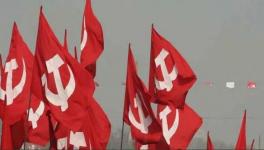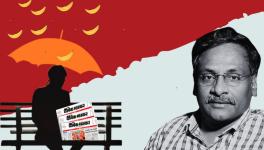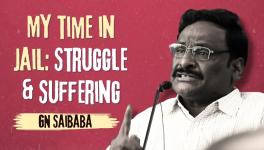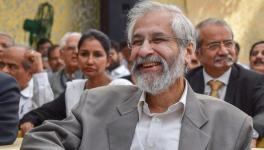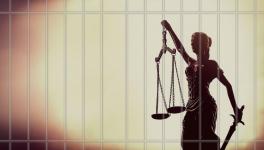Has the Thwaha Fasal Judgment Complicated UAPA even Further?
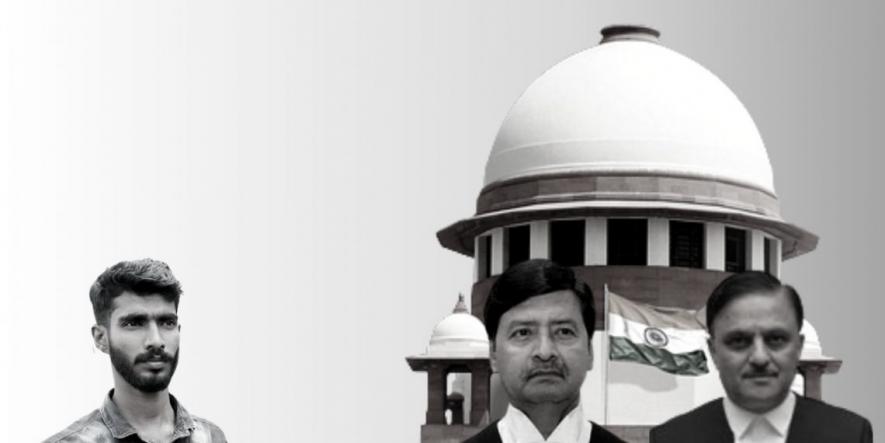
Image credit: The Leaflet
On October 28, 2021, a two-judge division bench of the Supreme Court delivered its judgment in a batch of two appeals: One appeal was filed by the Union of India challenging Allan Shuaib’s bail, and the other was filed by Thwaha Fasal challenging the rejection of his bail by the Kerala High Court.
The judgment is not an ordinary matter, for the allegations against the accused persons involved commission of offences under the draconian Unlawful Activities (Prevention Act), 1967 (UAPA) and its heightened restrictions on bail imposed by Section 43D(5). That, and the fact that the Supreme Court ultimately concluded that bail ought to be granted/confirmed, renders Thwaha Fasal a judgment of some import meriting our consideration.
Now, this decision has already been analysed by the indefatigable editor of the Indian Constitutional Law and Philosophy Blog, which commended its approach to the issue of deciding bail applications under the UAPA. Since I am broadly in agreement with those views, it would belabour the point to re-engage the judgment on issues of bail.
Instead, what I want to focus upon something that the ICLP Blog post starts with — that Thwaha Fasal has read down Sections 38 and 39 of the UAPA. These provisions punish associating with (Section 38) or supporting (Section 39) banned terrorist organisations, and the apex court has raised the bar for what conduct can amount to such an offence, thus broadening the sphere of personal liberty as a result.
As supportive as I might be personally of such a reading down of the clauses and broadening of individual liberty, the Court’s interpretation arguably runs counter to the text of the provisions as well as the scheme of the UAPA. Where the UAPA already insufficiently distinguished between the different offences of membership (Section 20), support, and association with banned terrorist organisations, I argue that the Court in Thwaha Fasal has opened the doors to further confusion. I also argue that, in the long run, the Court’s reading of the membership crimes in Thwaha Fasal might prove detrimental precisely because of how close it unwittingly brings these offences with that of conspiracy.
Court’s engagement with sections 38 and 39 of UAPA
The accused persons had been arrested for allegedly committing offences under Sections 13, 20, 38 and 39 of the UAPA. Later, though, the prosecution did not seek sanction to prosecute them under section 20, and so the case had proceeded ahead on only sections 13, 38 and 39. Out of these, Thwaha Fasal understandably did not focus on section 13 as that provision is not covered by the restrictive bail provisions of the UAPA.
The judgment begins with discussing the material against the accused persons in Paragraph 24 of the judgment, which largely consisted of pamphlets, books, diaries, banners, flags, and digital devices. Much of this material, including the material contained inside the digital devices, was found to be linked at a prima facie level to the Communist Party of India (Maoist), which is a banned terrorist organisation. Indeed, the Court in Thwaha Fasal, at the end of its discussion, notes at Paragraph 32, that “[t]aking the charge sheet as correct, at the highest, it can be said that the material prima facie establishes association of the accused with a terrorist organisation CPI (Maoist) and their support to the organisation.”
Before it reaches this discussion of the facts, the Court lays down what it considers as the correct interpretation of sections 20, 38 and 39 of the UAPA [Paragraphs 10 – 13]. The sum and substance of the Court’s reasoning is as follows:
(i) Section 20 applies only where the gang/organisation of which the accused is alleged to be a member of is involved in a terrorist act, where the words “terrorist act” would relate back to the offence of “committing a terrorist act” as defined under Section 15 of the UAPA.
(ii) Section 38 can apply where a person is a member of a banned terrorist organisation and non-members who associate with such organisations, but only if the accused did the alleged activity with intention to further the activities of such an organisation. But, that is not all, for as the Court notes “The activity has to be in connection with terrorist act as defined in Section 15.”
(iii) Similarly, the Court notes that the offences of supporting a terrorist organisation as are punishable under Section 39 “are attracted only when the actions incorporated therein are done with intention to further the activities of a terrorist organisation. As observed earlier, the activities must have some connection with terrorist act.”
It would be clear, then, that Thwaha Fasal goes as step beyond the idea of active membership which was espoused by earlier judgments of the Supreme Court such as Arup Bhuyan (2011). Thwaha Fasal not only requires active membership for attracting sections 38 and 39 that would be gleaned from overt acts, but also narrows down the kinds of activity with which the association/support can be, by specifying that the “activity” here refers to committing of a “terrorist act”.
The limits of criminal liability and anti-terror statutes
The idea that criminal law punishes conduct which caused harm as well as conduct which attempted to do so is widely accepted today; so widely accepted, that we often forget just how precarious this line of logic is from the perspective of individual liberty.
Criminal law marks the zone of prohibited conduct and thus limits individual liberty by telling persons that should they engage in prohibited conduct, they could be sanctioned. To maximise the sphere of liberty, it is accepted that criminal statutes must be precisely worded, clearly defining the proscribed conduct and the associated mental element, because any interpretive gaps in such statutes carry the risk of casting a chilling effect on the exercise of freedom — nobody would want to risk imprisonment, and so everyone would err on the side of caution.
Moving back the trigger of liability from the stage of committing a crime to the point of attempting it entails a drastic reduction in the scope of individual freedom in theory, because ex facie innocent acts can be seen as problematic if it is alleged that these were committed with the requisite mental element.
Where Parliament was tasked with defining the actual offence, in context of attempts (and conspiracy, when we think of groups) that definitional task gets delegated to the police or courts, which brings about a notable decline in the specificity expected from the law. Since the accused normally does not get a chance to give her version of events and prove that the purported criminal intent was missing till very late in the day, the chilling effect is cast when we see more and more persons prosecuted for seemingly innocent acts — say, cheering for a rival sports team, or writing an article, or going for a protest — being prosecuted as conspiracies or attempts to commit heinous crimes.
If you think this is a slippery slope, the problem becomes far worse when we deal with anti-terror statutes. Considering the scale of what is at risk, legislatures almost all over the world agree that the trigger point for permitting State intervention ought to be even further back than at the point of attempts or conspiracy, to cover even preparatory conduct. This is to be found under Section 18 of the UAPA.
Similarly, to nip threats in the bud, the UAPA punishes associating with/supporting/financing organisations that have been identified as engaging with the commission of terrorist activity and are therefore “banned”. This process of specifically banning the organisation is deemed to be indicative of its dangerous nature, and so these provisions of sections 20, 38, and 39 typify the proverbial guilt by association.
Unpacking the two-part test in Thwaha Fasal
Guilt by association, therefore, seriously encroaches into the sphere of personal liability, and is not ordinarily resorted to by lawmakers. Anti-terror statutes fall into that exceptional area where the risks to society are assumed to be so grave that it is considered justified to cast the net of criminal liability far and wide.
The two-part test conceived of by the apex court in Thwaha Fasal must be considered within this framework, as an attempt to place firmer contours upon the limits of associative liability under sections 38 and 39 of the UAPA to safeguard personal liberty.
The problem is that this shoring up of the contours runs contrary to the scheme of the UAPA, insofar as the Court places two prongs and requires that supporting/associating with any banned terrorist organisation means active involvement with only such of its activities that is connected to the commission of terrorist acts. This limit cannot be found within the text of the two provisions. It is also evidently contrary to the entire legislative intent of the banned organisation being deemed to be dangerous.
The confusion is perhaps caused because there are two different strands of group liability that run through the UAPA. Sections 38 and 39 cast the net far back on this notion of presumed dangerousness of banned terrorist organisations. These coexist with section 20 which is more closely linked to the commission of terrorist acts, as it punishes membership of gangs/organisations “involved in terrorist acts”. To be clear, the idea of active membership ought to be read into both these strands — but what the Court does in Thwaha Fasal is to subsume sections 38 and 39 into section 20, by insisting that the “activity” of a terrorist organisation ought to be read as “terrorist act”.
There is yet another issue that is posed with the Court’s two-part test. By requiring active association with activity conducted by persons that is connected, in turn, with commission of terrorist acts, the Court has unwittingly drawn sections 38 and 39 very close to the kind of liability carried by section 18 of the UAPA — which punishes any person who “conspires, attempts to commit, or advocates, abets, advises or incites, directly or knowingly facilitates the commission of a terrorist act or any act preparatory to the commission of a terrorist act”, and carries a minimum five year jail-term which may extend up to life imprisonment.
Where the police officer might have refrained from resorting to section 18 when the facts involved, say, meetings of members of terrorist organisations which did not relate closely to commission of terrorist acts, Thwaha Fasal might prompt more frequent (and equally unjustified) resort to section 18 on a stray allegation that the meeting discussed future commission of terrorist acts.
What was, thus, a liberty-affirming judgment, might lead an unruly executive to rely upon other liberty-eroding means to achieve its ends.
It is with good reason that various court commentators celebrate any judgment which grants/affirms grant of bail under the UAPA today, and on that count, there is little to fault with the judgment in Thwaha Fasal. The difficulty, however, is in how the Supreme Court has interpreted the substantive offences of associative liability involved in the case.
In its attempt to shore up the hazy contours of sections 38 and 39 of the UAPA, the Court might have erred in going to state that the phrase “activity” under these clauses ought to be linked with “terrorist acts” as is defined under section 15. This, I argue, is an incorrect exposition of the law.
The correct exposition, I would argue, is how the Court frames its conclusions on the factual aspect in Paragraph 35, where it notes that “prima facie there is no material in the charge sheet to project active participation of the accused nos.1 and 2 in the activities of CPI (Maoist) from which even an inference can be drawn that there was an intention on their part of furthering the activities or terrorist acts of the terrorist organisation. (Emphasis supplied)”
At its best, Thwaha Fasal is a fantastic, liberty affirming judgment, which fights back against casting the net of criminal liability across a sphere of innocent conduct. At its worst, and this only time shall tell, Thwaha Fasal will encourage police to forsake the relatively lenient crimes of sections 38 and 39, instead turning to the more draconian options under sections 18 and 20 of the UAPA.
(Abhinav Sekhri is a lawyer practising in Delhi who focuses on criminal law and procedure. He edits the Proof of Guilt blog and his recent academic writing can be accessed here. The views expressed are personal.)
Get the latest reports & analysis with people's perspective on Protests, movements & deep analytical videos, discussions of the current affairs in your Telegram app. Subscribe to NewsClick's Telegram channel & get Real-Time updates on stories, as they get published on our website.











